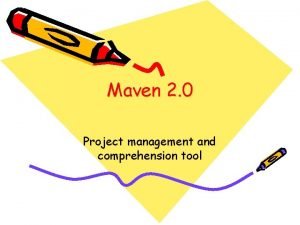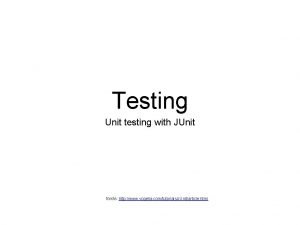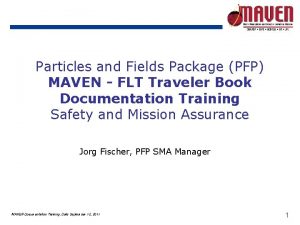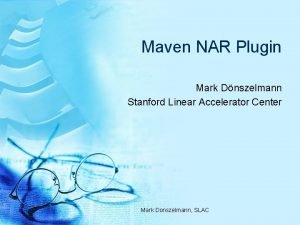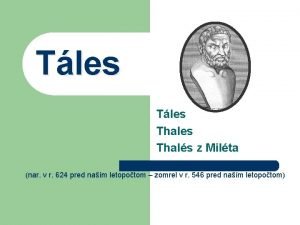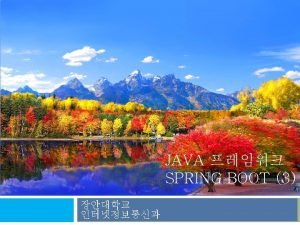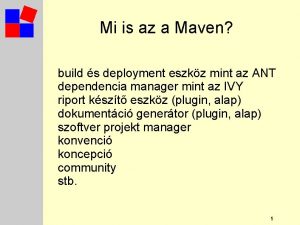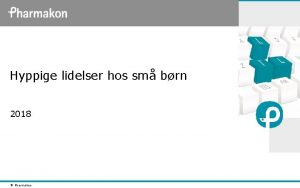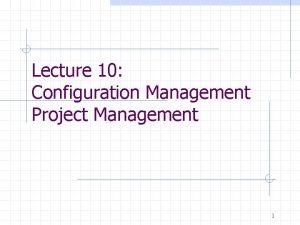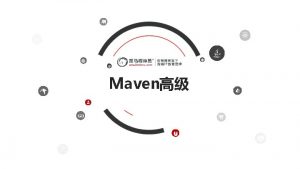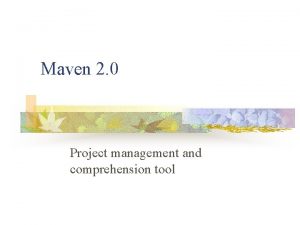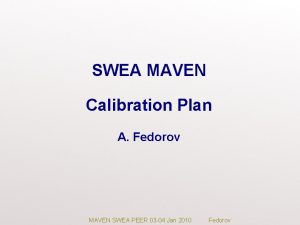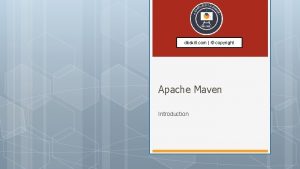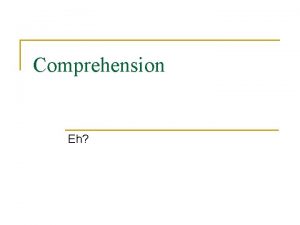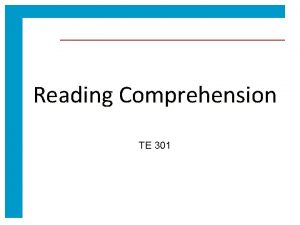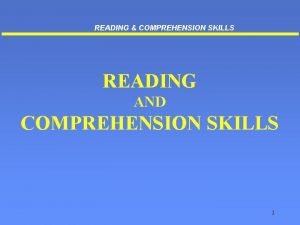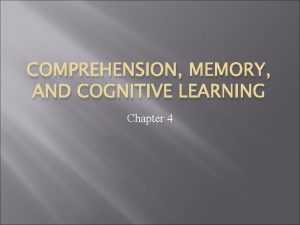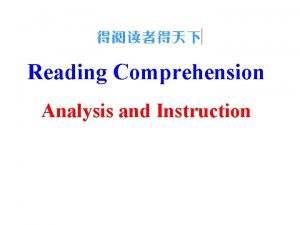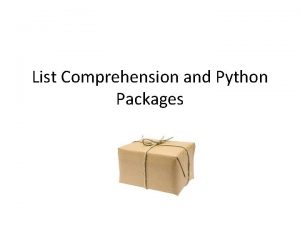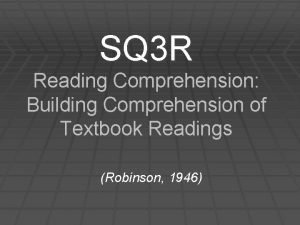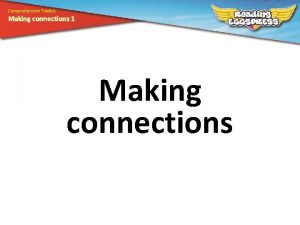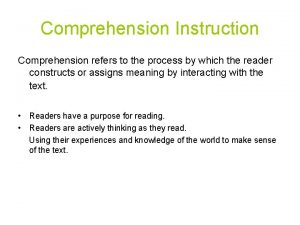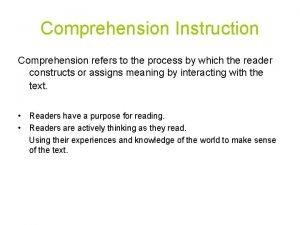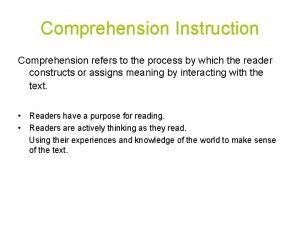Maven 2 0 Project management and comprehension tool


























- Slides: 26

Maven 2. 0 Project management and comprehension tool

What is Maven? A build tool A dependency management tool A documentation tool

Apply patterns to project build infrastructure Maven is really a process of applying patterns to a build infrastructure in order to provide a coherent view of software projects. Provides a way to help with managing: • • Builds Documentation Reporting Dependencies Software Configuration Management Releases Distribution

Objectives • Make the development process visible or transparent • Provide an easy way to see the health and status of a project • Decreasing training time for new developers • Bringing together the tools required in a uniform way • Preventing inconsistent setups • Providing a standard development infrastructure across projects • Focus energy on writing applications

Benefits • Standardization • Fast and easy to set up a powerful build process • Greater momentum vs. Ant – it is now becoming legacy and not moving fast ahead. • Maven 2 is recent and much more refined than Maven 1 • Dependency management (automatic downloads) • Project website generation, Javadoc • Repository management

Maven Architecture Plugin e. g. jar Projects to build Maven Core Plugin e. g. surefire Plugin e. g. release Local machine Remote repository or local install

Common project metadata format • POM = Project Object Model = pom. xml • Contains metadata about the project • Location of directories, Developers/Contributors, Issue tracking system, Dependencies, Repositories to use, etc • Example: <project> <model. Version>4. 0. 0</model. Version> <group. Id>org. codehaus. cargo</group. Id> <artifact. Id>cargo-core-api-container</artifact. Id> <name>Cargo Core Container API</name> <version>0. 7 -SNAPSHOT</version> <packaging>jar</packaging> <dependencies/> Minimal POM <build/> […]

Standard directory organization • Having a common directory layout would allow for users familiar with one Maven project to immediately feel at home in another Maven project. src/main/java Application/Library sources src/main/resources Application/Library resources src/main/filters Resource filter files src/main/assembly Assembly descriptors src/main/config Configuration files src/main/webapp Web application sources src/test/java Test sources src/test/resources Test resources src/test/filters Test resource filter files src/site Site LICENSE. txt Project's license README. txt Project's readme

Common way to build applications M 2 generatesources mojo compile mojo test mojo package user e. g. mvn install plugins integrationtest mojo install deploy bindings Well-known phases mojo MOJO – Maven 2 Plugins Project http: //mojo. codehaus. org/

Artifact repositories (1/3) • Used to store all kind of artifacts • JARs, EARs, WARs, NBMs, EJBs, ZIPs, plugins, … • All project interactions go through the repository • No more relative paths! • Easy to share between team Local Artifact Repository Remote Artifact Repository e. g. http: //ibiblio. org/maven 2 <repositories> <repository> <id>maven 2 -snapshot</id> <releases> <enabled>true</enabled> </releases> <name>Maven Central Development Repository</name> <url>http: //snapshots. maven. codehaus. org/maven 2</url> <layout>legacy|default</layout> </repository> </repositories>

Artifact repositories (2/3) • Some public remote repositories JIRA upload requests m 1 ibiblio m 1 Conversion + sync ibiblio m 2 JIRA upload requests m 2 sync + conversion sync Codehaus Object. Web m 1 Apache m 1 Jetty m 1 partners Open Symphony m 1 OS Java m 1

Artifact repositories (3/3) • Hierarchical structure • Automatic plugin download • Plugins are read directly from the repository • Configurable strategies for checking the remote repositories for updates • Daily check by default for plugin and ranges updates • Remote repositories contain Metadata information

Dependency management (1/2) • Maven uses binary dependencies A B C <dependencies> <dependency> <group. Id>com. acme</group. Id> <artifact. Id>B</artifact. Id> <version>[1. 0, )</version> <scope>compile</scope> </dependency> </dependencies> Look for A & B Build C « any version after 1. 0 » Look for A & B Artifact Repository Artifact (Local) Repositories (Remote)

Dependency management (2/2) • Transitive dependencies • Possibility to exclude some depndencies • Need good metadata • Ideally projects should be split • SNAPSHOT handling • Always get latest • Automatic dependency updates • By default every day Only need to include A A B C D

Installation and Setup • Download Maven 2 from http: //maven. apache. org/ • Add Maven’s bin directory to PATH • Ensure JAVA_HOME is set to SDK • Run mvn –version to test install C: Documents and Settingsalina>mvn -version Maven version: 2. 0. 7 Java version: 1. 5. 0_08 OS name: "windows xp" version: "5. 1" arch: "x 86"

Installing JARs to local repository • Sometimes you need to put some specific JARs in your local repository for use in your builds • The JARs must be placed in the correct place in order for it to be correctly picked up by Maven • To install a JAR in the local repository use the following command: mvn install: install-file -Dfile=<path-to-file> -Dgroup. Id=<group-id> -Dartifact. Id=<artifact-id> -Dversion=<version> -Dpackaging=jar • Now can include dependency in pom. xml: <dependency> <group. Id><group-id></group. Id> <artifact. Id><artifact-id></artifact. Id> <version></version> </dependency>

Plugin for Eclipse • Help Software Updates Search & Install • Remote Site • Name: m 2 plugin • URL: http: //m 2 eclipse. codehaus. org • Will list newest version • Wait for download to complete • The URL also has Flash demos

Using from Eclipse • Enable Maven: • right click on the project Maven 2 Enable • Add dependency: • right click on the project Maven 2 Add Dependency • Executing goals: • right click pom. xml and ‘Run As Maven 2 build’ to set a goal • It’s possible to debug during the build process

Overview of common Goals • validate - validate the project is correct and all necessary information is available • compile - compile the source code of the project • test - test the compiled source code using a suitable unit testing framework. These tests should not require the code be packaged or deployed • package - take the compiled code and package it in its distributable format, such as a JAR • integration-test - process and deploy the package if necessary into an environment where integration tests can be run • install - install the package into the local repository, for use as a dependency in other projects locally • deploy - done in an integration or release environment, copies the final package to the remote repository for

Creating project website • Right click the pom file, run as to set goal • Enter “site” this time as the goal • Let the build run, it’ll start downloading and creating things left and right • Eventually in the target dir you end up with a site dir, with an apache-style project website • Javadoc, various reports, and custom content can be added

More stuff • Automatically generate reports, diagrams, and so on through Maven / the project site • Internationalization – create different language project websites • Create projects within projects (more pom. xml files inside sub dirsjars), with different build stats and so on • Maven can make. war files, EJBs, etc.

Using Maven Plugins • Whenever you want to customise the build for a Maven project, this is done by adding or reconfiguring plugins • For example, configure the Java compiler to allow JDK 5. 0 sources. . . • Plugins in Maven 2. 0 look much like a dependency <build> <plugins> <plugin> <group. Id>org. apache. maven. plugins</group. Id> <artifact. Id>maven-compiler-plugin</artifact. Id> <configuration> <source>1. 5</source> <target>1. 5</target> </configuration> </plugins> </build>. . .

Maven 2 Plugins • • • • • • Almost. Plain. Text Maven Axis Maven Cobertura Maven DB 2 Dbunit Debian Package Maven Dot. Uml Doxygen Maven Files Find. Bugs Maven flash Help Maven Iz. Pack Java Application Maven JAVANCSS Maven JAXB JUNITPP Kodo Maven Macker SDoc. Book Sourceforge Maven Spring. Graph RPM Plugin Runtime Builder • • • • Strutsdoc Tasks Maven Transform Maven Uber. Dist Maven Vignette Web. Sphere 4. 0 Web. Sphere 5 (5. 0/5. 1) Maven Web. Logic Canoo Web. Test Wiki Word to HTML XML Resume Maven Dot. Uml Middlegen Maven News

Archetypes • For reuse, create archetypes that work as project templates with build settings, etc • An archetype is a project, with its own pom. xml • An archetype has a descriptor called archetype. xml • Allows easy generation of Maven projects

Good things about Maven • • • • Standardization Reuse Dependency management Build lifecycle management Large existing repository IDE aware One directory layout A single way to define dependencies Setting up a project is really fast Transitive dependencies Common build structure Use of remote repository Web site generation • • • Build best practices enforcement Automated build of application Works well with distributed teams All artifacts are versioned and are stored in a repository Build process is standardized for all projects A lot of goals are available It provides quality project information with generated site Easy to learn and use Makes the build process much easier at the project level Promotes modular design of code

References • Maven Home http: //maven. apache. org/ • Maven Getting Started Guide http: //maven. apache. org/guides/getting-started/index. html • Steps for creating a Maven-based Website http: //www. javaworld. com/javaworld/jw-02 -2006/jw-0227 -maven_p. html • Maven 2 Plugins Project http: //mojo. codehaus. org/ • Maven Integration for Eclipse http: //m 2 eclipse. codehaus. org/
 Maven is a project management and comprehension tool
Maven is a project management and comprehension tool Introduction for project
Introduction for project Mark alpert tipping point
Mark alpert tipping point Mockolás
Mockolás Maven vista technologies pvt ltd
Maven vista technologies pvt ltd Maven pfp
Maven pfp Maven pfp
Maven pfp Phython
Phython Mybatis resultmap hashmap
Mybatis resultmap hashmap Maven nar plugin
Maven nar plugin Maven nar plugin
Maven nar plugin Spring boot view
Spring boot view Express deployment tool
Express deployment tool Falsk strubehoste baby
Falsk strubehoste baby Maven nar plugin
Maven nar plugin Project proposal about reading comprehension
Project proposal about reading comprehension The role of project management in achieving project success
The role of project management in achieving project success Modern project profiles in spm
Modern project profiles in spm When reducing project duration
When reducing project duration Introduction to project management kathy schwalbe
Introduction to project management kathy schwalbe Project evaluation in software project management
Project evaluation in software project management When conducting post project audits
When conducting post project audits Microsoft project scrum template
Microsoft project scrum template Project termination
Project termination Potter's tool is data cleaning tool
Potter's tool is data cleaning tool Managing assets vs asset management
Managing assets vs asset management Configuration management system pmp
Configuration management system pmp
